- The Daily Concept
- Posts
- 👩👩👧👦 Third Places: where we find community
👩👩👧👦 Third Places: where we find community
& why humans need a place to hang out with each other.

The data is clear: Americans are spending less and less time with their friends.
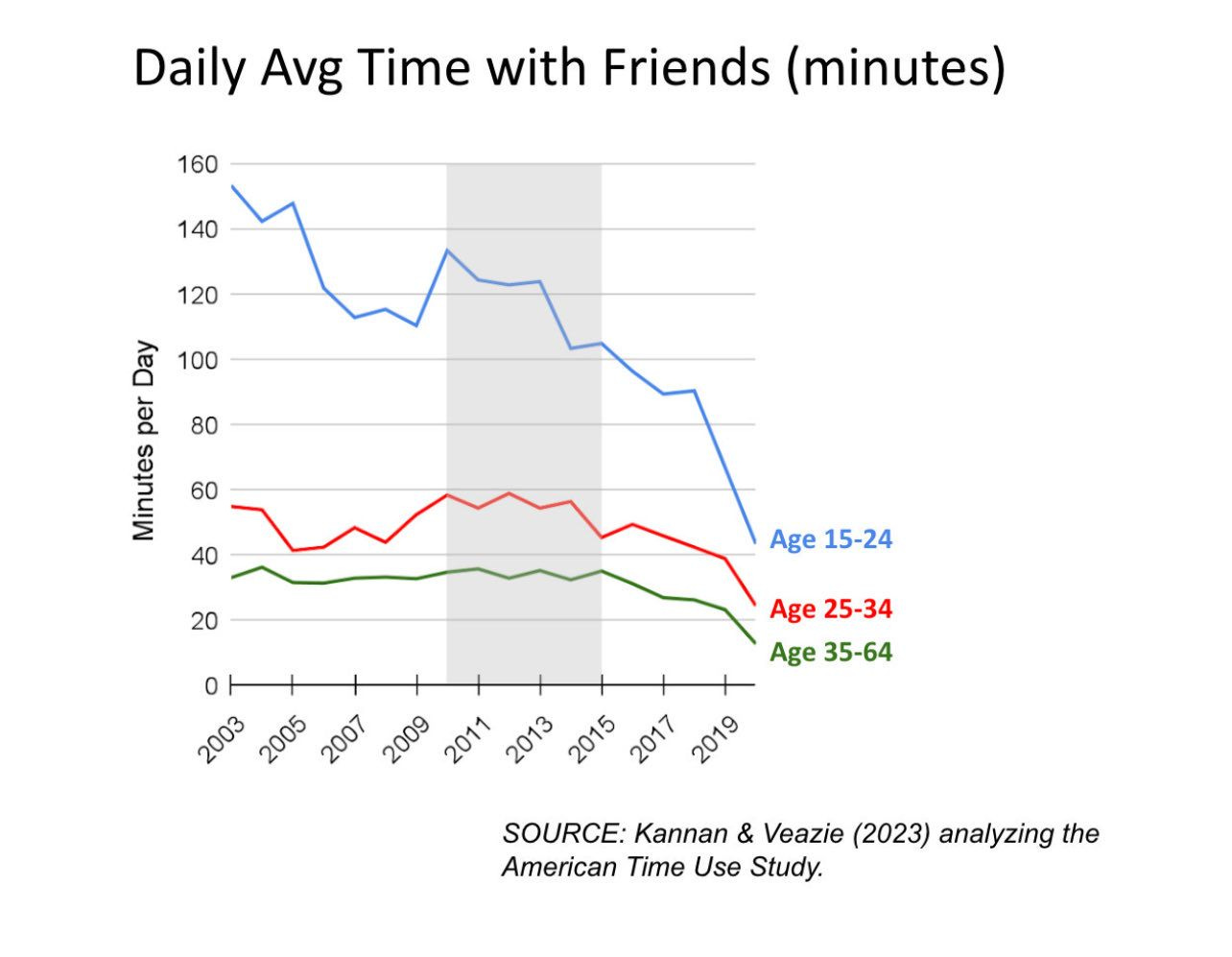
Why has this happened? Smart phones and social media have certainly played a big part in the decline of in-person friendship and the timeless art of ‘hanging out’.
But there have also been changes in the physical world that’ve made it harder for people to meet and spend time together.

Teenagers used to hang out in malls, libraries, cafes, and other public places where you didn’t need to pay to be there.
Diners were open all night, and all you needed to buy was a cup of coffee to have a place to spend your evening.
These places are known as ‘third places’, and their slow disappearance from public life poses a major problem for society.
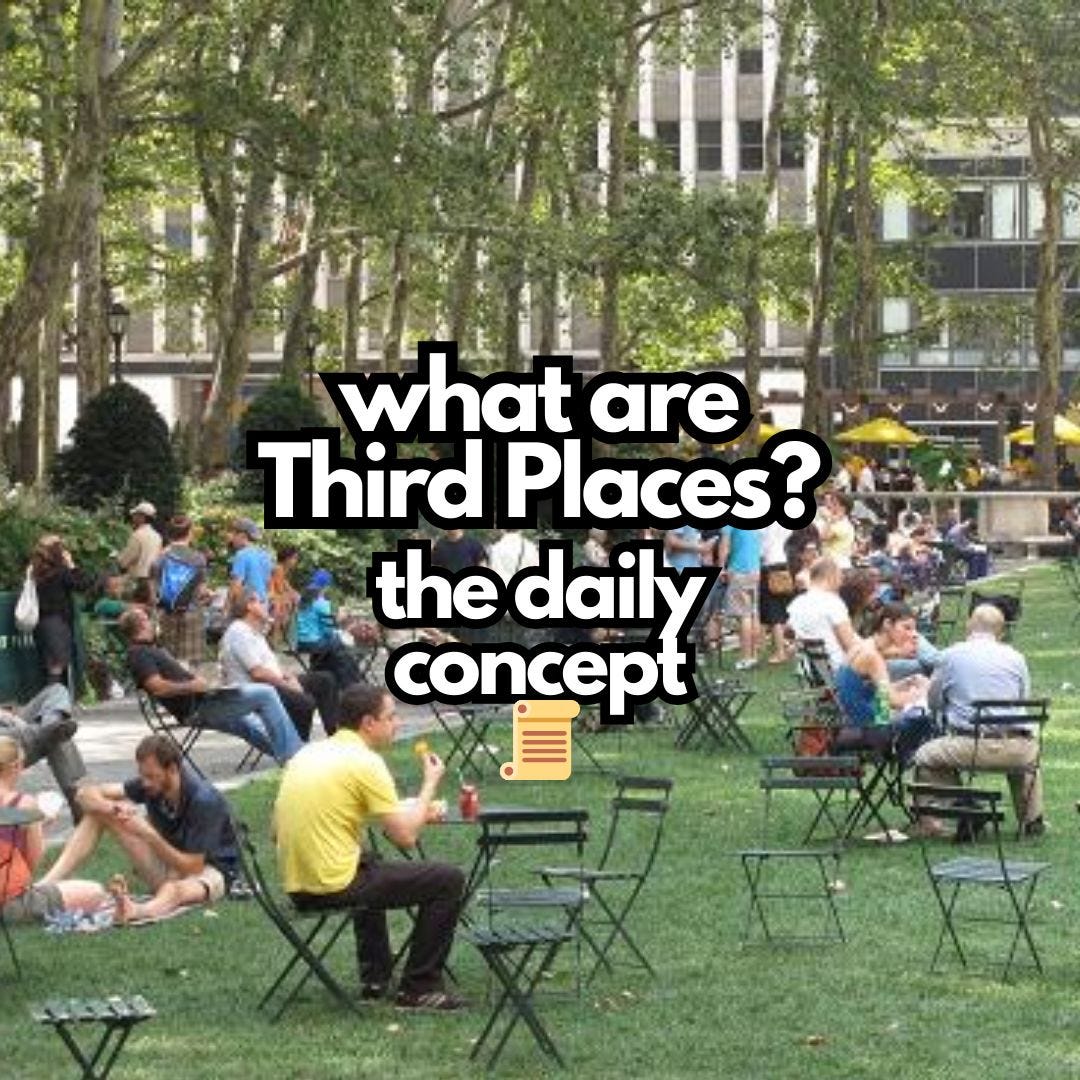
Ray Oldenburg, the sociologist who developed the idea of third places, explained:
1️⃣ The first places is the home
2️⃣ the second place is the workplace
The third place, then, is a place outside of home or work where people can hang out with friends and members of their community.

Third places are all around us. Think of a:
cafe
pub
gym
public park
bookstore
library
Third place plays a vital role in connecting people to their broader community and other parts of society that they may not encounter in and around the home or workplace.
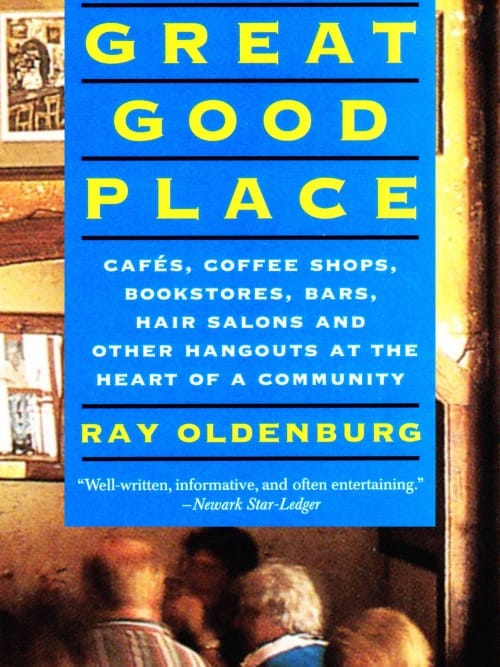
Ray Oldenburg’s 1989 book introducing the idea of the Third Place
In his book The Great Good Place, Oldenburg argues that third places play a vital role in strengthening democracy and community in our societies.
Without third places, it is easier for people to become socially isolated or to retreat into an us-vs.-them mindset instead of relating to one another despite our differences.

What makes a Third Place?
According to Oldenburg, there are eight key characteristics of a third place:
it is a neutral place where anyone can come and go as they please
it is a socially-even place where status or wealth are largely irrelevant
conversation is the primary activity
it is accessible and accommodating
it has regulars who help give the place its character
it is unpretentious and welcoming
it has a playful and positive mood
it can provide the warmth, comfort, and conviviality of a home away from home

Third places have always been part of human society, and they have frequently played a part in enabling social change.
The men who started the American Revolution in the late 1700s met and discussed politics and ideas in taverns, for example.
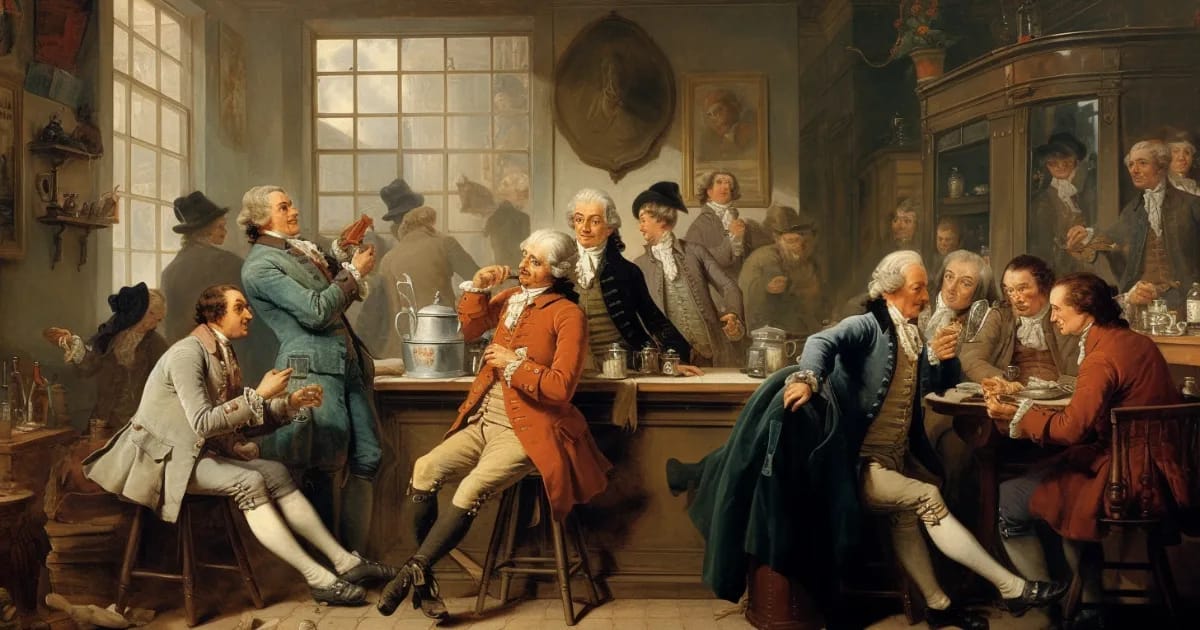
Oldenburg argued that the suburbanization of modern society contributed to the disappearance of third places.
If people are getting around in their cars, they're less likely to participate in local third places.
The long-term decline of local small businesses and the growth of commercial chain restaurants and stores has also contributed to the decline of third places.

Starbucks is a rare exception, and the coffee chain actively tries to cultivate a third place environment for customers.
The disappearance of third places may be playing a big part in the rise of loneliness in the U.S. and around the world.
Are there any third places where you like to spend time? Reply to this email and let me know.
LEARN MORE:
READ: The Project for Public Spaces published an excellent article about creating Third Places entitled: “To Make a Great Third Place, Get Out of the Way”
ART OF THE DAY
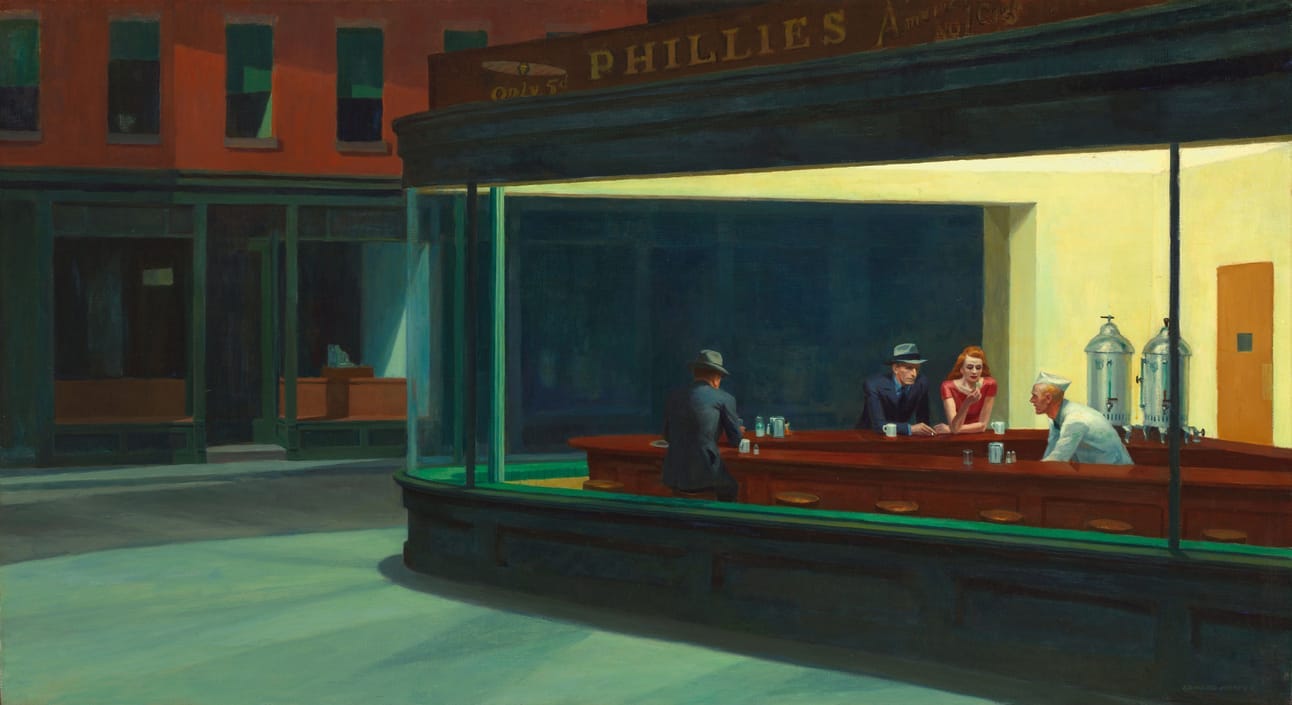
Nighthawks by Edward Hopper. 1942.